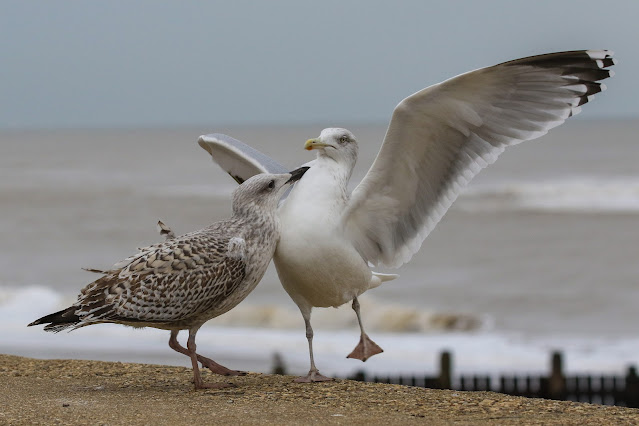Over the past couple of weeks, the local Magpie pair have been visiting their nest positioned high up in a neighbour's tree. Today, a commotion around the gardens led us to witness at least a dozen Magpies cackling, whistling and chortling to one another in the vicinity of said nest.
 |
| Squabbling in the Vicinity of the Nest |
Periodically a few of these would break away and chase one another unhurriedly across the street, always looping back into the tree in which their brethren were having a chat. I’ve witnessed these gatherings before which always happen in late winter or early spring. There’s never any outright aggression, just a long, sometimes heated, conversation presumably over territorial rights. Or perhaps its their equivalent to a pint and a mardle down the pub.
 |
| Some of the Chattering Group |
Time was when the sight of a Magpie locally would have been quite notable, now it seems we have pairs littered all over our suburban landscape. Seen close to they are really rather handsome creatures, but of course have a nasty habit of raiding the nests of garden birds during spring. I’ve noticed though that this habit occurs mainly early on when nests are more exposed and built by inexperienced birds. It’s cruel to us, but maybe it teaches those Blackbirds etc to think a little more about where they build, forcing them to be more cunning themselves. I guess the acid test as to whether Magpies really affect garden bird populations is to assess numbers over time. Judging by the results of the recent Big Garden Birdwatch count and the yearly crop of young Robins, Dunnocks and Blue Tits hereabouts, there really doesn’t seem like there’s any long-term declines that can be laid at the Magpies' door. Love them or hate them, they are obviously here to stay.




.png)














